After Liverpool parted ways with their throw-in coach, a new avenue to explore in the interest of marginal gains could be found in the centre circle.
The whistle blows to begin the game.
Liverpool send the ball back to Ibrahima Konate, who immediately floats a long diagonal ball towards the left wing…where the opposition win the header and take over possession.
Liverpool’s momentum is stopped in its tracks.
Sound familiar?
Despite employing a throw-in coach, a breathing expert and a team of neuroscientists in recent times, Liverpool haven’t evolved their kickoff routine for years.
With a full pre-season on the training pitch ahead, could the Reds make kickoffs their next marginal gain?
What we currently do – and why
The right centre-back to left wing route has been Liverpool’s go-to for years. But although it resembles a Sunday league routine, there is a tactical motivation behind it.
By playing forwards directly from kickoff, Liverpool often give the ball straight to the opponent.
But as it travels, the team are pushing up and squeezing the pitch both high and wide, meaning the opponent has very little opportunity to keep the ball – either giving it back to the Reds directly or booting it out of play.
In this example, Joel Matip is set to receive. There are also four Liverpool players already clustered on the left, ready to swarm the second ball.
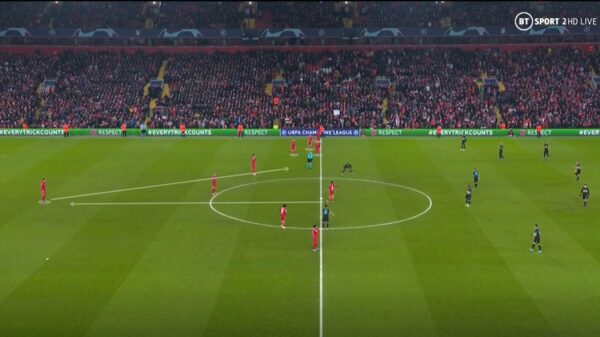
Opponents Inter win the initial header. But with nowhere for the ball to go, Liverpool’s swarming players easily pick it up.
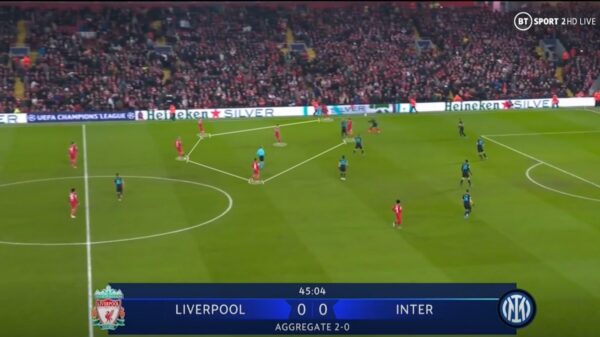
Meanwhile, Matip has sauntered up to the halfway line. After seven seconds, Liverpool already have the ball and their entire shape in place to construct the attack.
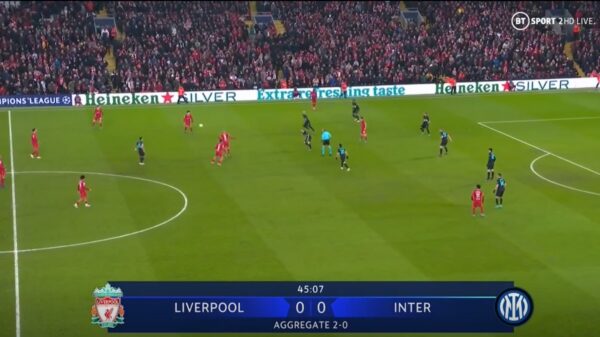
So why is this no longer working?
Liverpool struggled massively in the counter-press last season. Building their out-of-possession principles around winning one-on-ones all over the pitch – previously a huge strength – proved disastrous, with players frequently losing duels.
One way Liverpool tried to adapt was by changing up their goal-kicks.
The repeated failure to win second balls led to fewer long kicks, with the Reds attempting instead to build out patiently from the back.
There’s a lot wrong with Liverpool but a clear difference in their game this season compared to last season is the difference in their approach from goal kicks.
This season they only ‘launch’ the ball 21.4% of the time but last season they kicked long 31.4% of the time (@fbref). pic.twitter.com/WeCNDLgHcM
— EBL (@EBL2017) April 4, 2023
However, the players at Jurgen Klopp‘s disposal struggled to consistently break the opposition press, leading to some humiliating goals conceded.
While the new 3-2-5 structure did improve Liverpool’s counter-pressing, they’ll need to recruit some more technical players this summer if they want to stick with it.
So how could Liverpool switch up their kickoff routines to take advantage of this?
Milan, Madrid…Bournemouth
For a similarly direct approach, Liverpool could look at AC Milan, who employ a routine that relies on ball-carrying to break lines and force an overload from the outset.
In this example vs. Sassuolo, six Milan players immediately flood forwards.
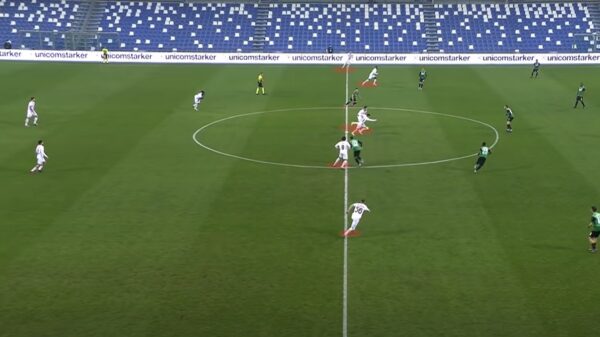
Hakan Calhanoglu dribbles 15 yards forwards, while the overwhelming numbers stretch the Sassuolo defence. He’s waiting for a gap, and once it appears…
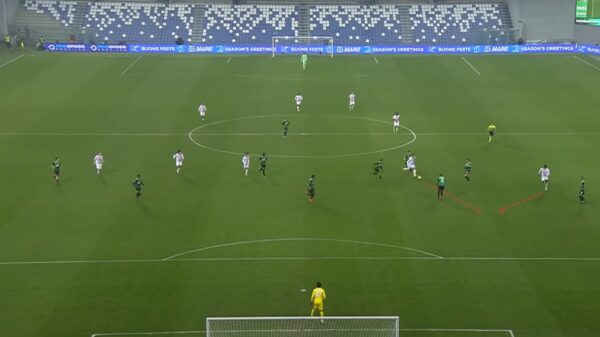
…he finds Rafael Leao, who scores Serie A’s fastest-ever goal.
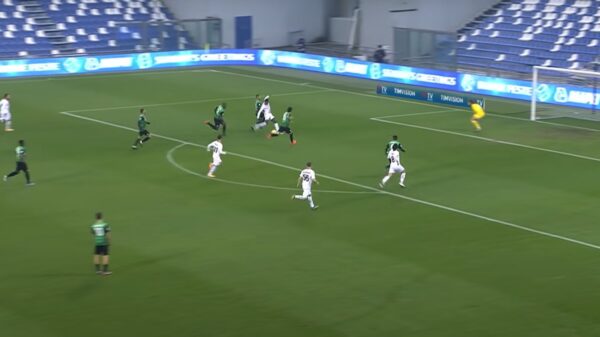
It’s more complex than Liverpool’s current approach, but it’s still pretty simple – and still pretty heavy metal.
For a more intricate, creative play, Liverpool could look to the MVPs of the kickoff routine: AFC Bournemouth.
Their goalscoring sequence vs. Fulham in the Championship went so viral that Real Madrid tried to copy it against PSG in the Champions League.
Last season, the Cherries took a nine-second lead over league leaders Arsenal with a new, intelligent play that knits together several principles from the previous examples.
Bournemouth start off by lining up four players on the left of the centre circle, similar to Liverpool.
This causes Arsenal to shift players over to that side and prevent an overload.
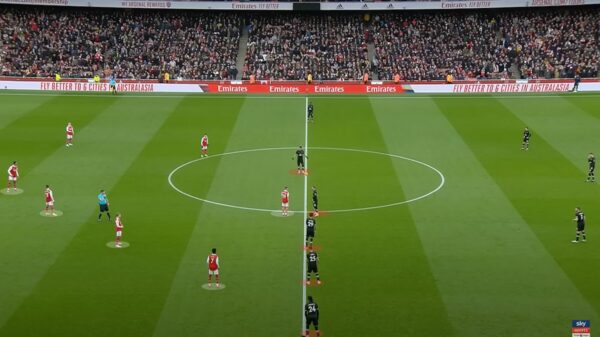
But once the ball is in play, Joe Rothwell immediately switches to the opposite side – where Dango Ouattara now has space.
Meanwhile, Bournemouth‘s cluster hare towards the penalty area.
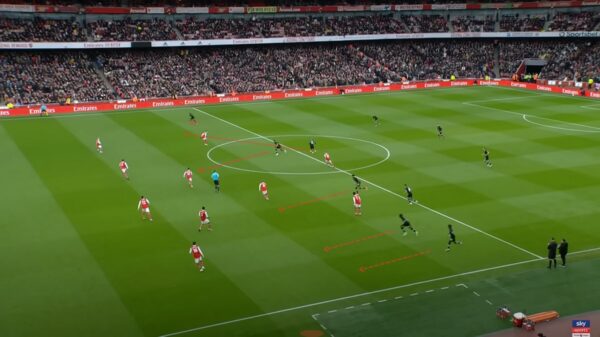
With Bournemouth already through that initial line of pressure, Gabriel Martinelli has to track back to support Oleksandr Zinchenko.
Despite the two-vs-one, Outtara manages to thread his cross into the box.
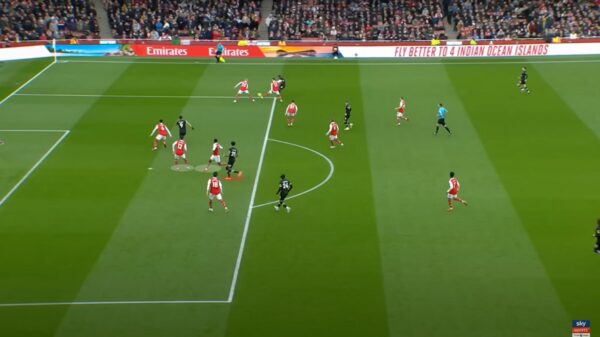
Dom Solanke makes a run to the near post, occupying Gabriel, while Philip Billing angles towards the far post.
Thomas Partey tracks back with him as the cross comes in, but then tries to pass him on to William Saliba.
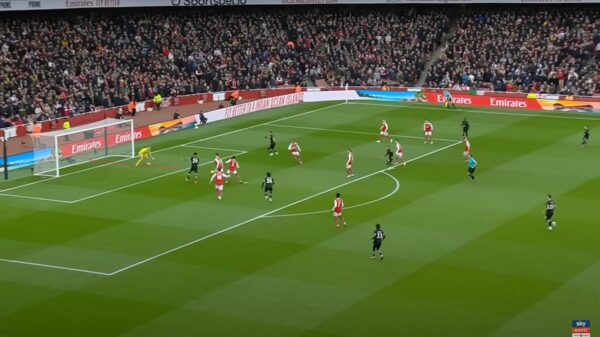
A tiny delay in registering the handover allows Billing to get ahead of Saliba, and a kind deflection on the cross leaves him a simple finish.
How does this apply to Liverpool?

From midfield, the likes of Thiago, an inverted Trent Alexander-Arnold and new signings Alexis Mac Allister and Dominik Szoboszlai are all perfectly equipped to carry out these routines.
It’s not hard to envision any of them carrying the ball into danger or threading a perfect pass through a stretched defence.
Further forward, Darwin Nunez and Cody Gakpo have each caused mayhem in different ways with their off-ball movement, and Mo Salah is always electric when he gets one-on-one.
The returning Luis Diaz adds another exceptional ball-carrier to the squad.
To get back to being the best, Liverpool must leave no stone unturned in pursuit of an advantage.
Kickoffs are one growth area still unexplored – perhaps this summer that will change.


